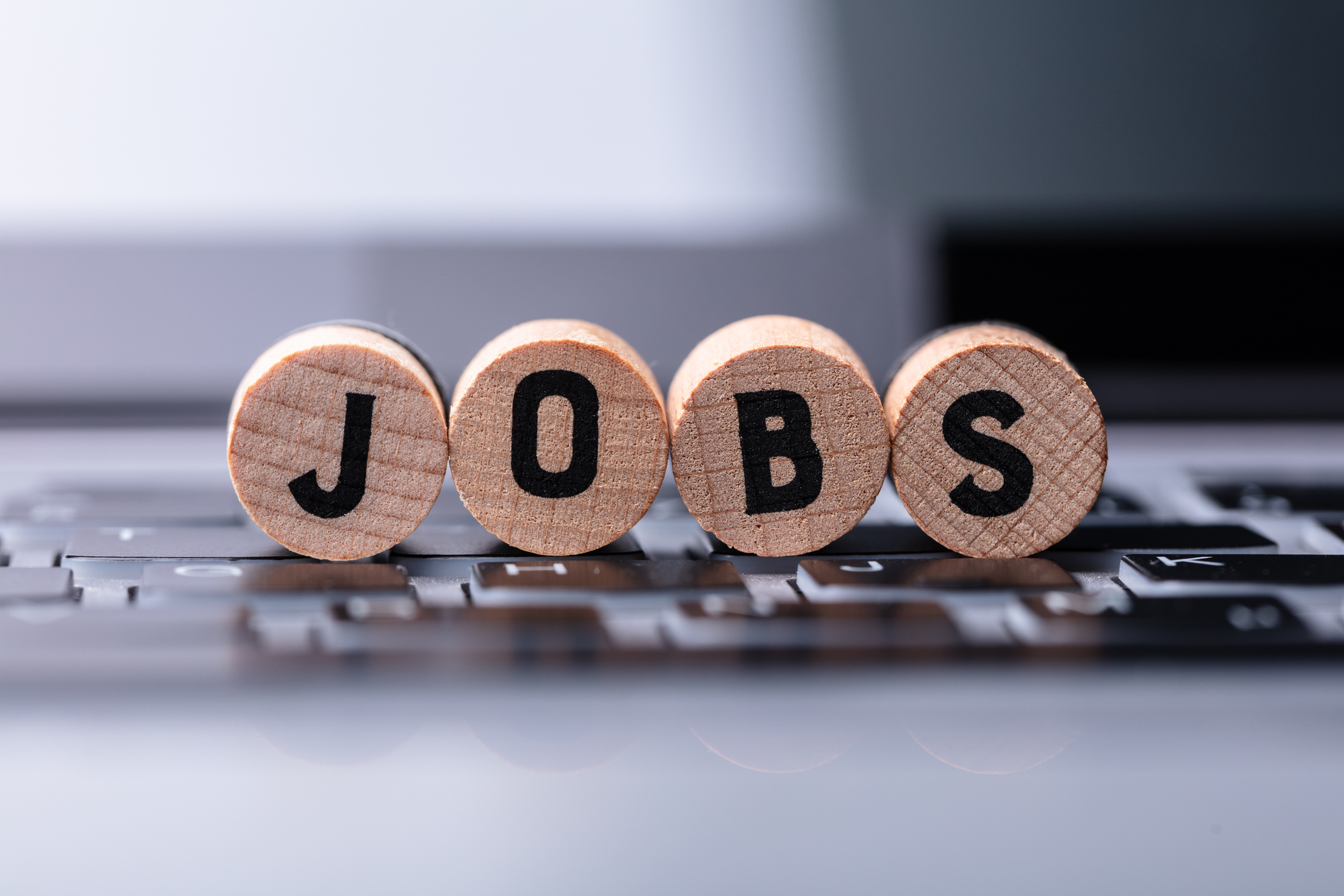The Best Health Care Stocks to Buy
The best health care stocks offer investors a defensive hedge in an uncertain market. Here's how to find them.


The health care sector has long been considered a defensive sector, alongside utilities and consumer staples. But honestly, that designation might do health care stocks a disservice.
Yes, pharmaceuticals, health care devices and medical coverage are among the last expenditures you'd cut if money were tight, and that fact gives the sector its defensive quality.
But health care is also a hotbed of innovation and sudden surges in revenue potential, as drugmakers and med-tech companies innovate new treatments and technologies, sometimes addressing brand-new markets.
From just $107.88 $24.99 for Kiplinger Personal Finance
Become a smarter, better informed investor. Subscribe from just $107.88 $24.99, plus get up to 4 Special Issues

Sign up for Kiplinger’s Free Newsletters
Profit and prosper with the best of expert advice on investing, taxes, retirement, personal finance and more - straight to your e-mail.
Profit and prosper with the best of expert advice - straight to your e-mail.
Put differently: Maybe it's time to start considering health care a "two-way player," a la Deion Sanders or Travis Hunter.
Today, we're going to examine health care stocks, including explaining why you'd want to invest in them and how you can find the best ones to buy.
Company (ticker) | Long-term EPS growth rate | Forward P/E ratio | Number of covering analysts | Analysts' consensus recommendation | Dividend yield |
Select Medical Holdings (SEM) | 8.5% | 15.0 | 7 | 1.50 | 1.5% |
Cigna Group (CI) | 10.4 | 11.3 | 29 | 1.76 | 1.8 |
Becton, Dickinson (BDX) | 9.9 | 14.1 | 22 | 1.77 | 2.0 |
Gilead Sciences (GILD) | 24.2 | 13.3 | 34 | 1.87 | 3.0 |
CVS Health (CVS) | 14.7 | 11.2 | 34 | 1.89 | 4.0 |
AbbVie (ABBV) | 13.7 | 14.8 | 35 | 1.96 | 3.6 |
Merck (MRK) | 12.8 | 8.9 | 32 | 2.00 | 4.1 |
Johnson & Johnson (JNJ) | 8.1 | 14.7 | 35 | 2.17 | 3.4 |
CONMED (CNMD) | 8.2 | 11.8 | 9 | 2.43 | 1.6 |
Company (ticker) | Long-term EPS growth rate | Forward P/E ratio | Number of covering analysts | Analysts' consensus recommendation |
Catalyst Pharmaceuticals (CPRX) | 9.6% | 16.3 | 9 | 1.13 |
Labcorp Holdings (LH) | 9.6 | 14.2 | 23 | 1.50 |
Select Medical Holdings (SEM) | 8.5 | 15.0 | 7 | 1.50 |
Addus HomeCare (ADUS) | 11.5 | 16.5 | 14 | 1.55 |
Neurocrine Biosciences (NBIX) | 17.2 | 17.4 | 28 | 1.56 |
Jazz Pharmaceuticals (JAZZ) | 11.2 | 4.7 | 22 | 1.58 |
Sarepta Therapeutics (SRPT) | 70.3 | 9.7 | 26 | 1.60 |
Tenet Healthcare (THC) | 10.5 | 10.2 | 25 | 1.64 |
BioMarin Pharmaceutical (BMRN) | 18.3 | 14.6 | 32 | 1.66 |
Harmony Biosciences (HRMY) | 17.6 | 9.4 | 10 | 1.67 |
What are health care stocks?
The health care sector might seem pretty narrow and specific at first glance, but in a way, it's actually one of the market's most inclusive sectors.
Before I explain, let's look at the textbook definition provided by the Global Industry Classification Standard (GICS) – a framework used by major index providers to help classify public companies:
"The Health Care Sector includes health care providers & services, companies that manufacture and distribute health care equipment & supplies, and health care technology companies. It also includes companies involved in the research, development, production and marketing of pharmaceuticals and biotechnology products."
Really think about what all that encompasses.
First, you have pharmaceuticals and biotechnology products – drugs, in other words. That business is as distinctly "health care" as it gets. The same goes for health care providers, such as hospitals, labs and medical offices.
But then you have health care equipment and supplies, which are much closer to the manufacturers you'd find among industrial stocks, it's just that they focus on health care goods.
You also have health care technology companies, which bleeds into the tech sector. And while most types of insurance companies belong to financial stocks, health insurers are still classified as health care.
In short, while all health care companies have a common bond, the sectors' businesses are actually quite diverse.
Why do investors buy health care stocks?
As mentioned above, health care stocks are generally considered to be a safety play.
The reasoning is simple: If the economy goes to pot, a lot of people will lose their jobs. Those people will have limited means and only be able to spend on certain things. Nikes and concert tickets probably go out the door to prioritize the electric bill, groceries and prescriptions.
It's an oversimplification, of course – one that leaves out the harsh reality that many people also lose their health insurance, will put off certain types of medical care, and sometimes cut back on all but the most essential prescriptions.
Still, while health care isn't recession-proof, it historically has been recession-resistant, and given the multitude of predictions that the U.S. will either fall into a recession or come close, that's still a helpful trait to have.
The health care sector has outperformed during the dot-com bubble bust, the Great Financial Crisis, 2011's sharp summer drop, 2018's near-bear, the 2020 COVID plunge and the 2022 bear market.
And at least since the February 19 market top, health care has been stronger than the broader market in 2025's current downturn.
Interestingly, though, this outperformance comes amid an extremely weak few months for health care, prompted by uncertainty amid expected (and implemented) policy changes by the new presidential administration.
As a result, health care remains one of the market's cheapest sectors despite its recent relative strength.
So, we have safety and, at least for now, value.
However, investors shouldn't overlook health care's downright persistent spending growth.
According to National Health Expenditure (NHE) data compiled by the Peterson Center on Healthcare and KFF, a pair of health care-focused nonprofits, U.S. health care spending per capita has led the average annual growth rate of GDP per capita for five decades.
Perhaps counterintuitively, that trend flipped across 2020 and 2023 … but that could just be temporary. U.S. health spending in 2023 was actually up by 7.5% in 2023.
Per the American Medical Association, "This growth rate is significantly higher than the 4.6% rise in 2022, and apart from the 10.4% rise in 2020 due to the COVID-19 pandemic, it is the highest growth rate observed since 2003 (8.5%)."
A great deal of this growth is fueled by pharmaceutical and biotechnological innovation.
"Last year, the FDA approved 60 novel drugs, following a record 72 approvals in 2023," say Andy Acker and Daniel Lyons, portfolio managers at Janus Henderson Investors.
"Some products are setting new standards in patient care, including the first-ever treatment for fatty liver disease (or MASH, the leading cause of liver transplant) and a hormonal replacement drug for hypoparathyroidism, a rare endocrine disorder with limited treatment options," they add.
How to find the best health care stocks to buy
The duality of health care stocks makes it really difficult for us to predict what you might want out of the sector.
Some investors prefer its defensive qualities – which in many cases includes above-average dividend yields, especially out of established pharmaceutical names.
But other investors love the potential growth offered by biotech and medical-technology names.
As a result, we've actually produced two separate lists based on two very similar screens. Both are basic quality screens that include some minimum thresholds for growth stocks and value stocks, but one of them also includes a baseline amount of income.
So, to get to these lists of the best stocks to buy in the health care sector, we've looked for firms that …
Are within the S&P 1500: The S&P 1500 is made up of the S&P 500 (large caps), S&P MidCap 400 (mid-caps) and S&P SmallCap 600 (small caps). That means we're looking for stocks of all sizes.
Are expected to grow earnings by at least 8% annually over the long term: We're not requiring breakneck earnings growth to be included on this list of health care stocks, but we are looking for at least high-single-digit improvement. (If you want much more aggressive picks, you'd want to screen for a higher projected earnings rate.)
Are cheaper than the market: The S&P 500 currently trades at 19 times next year's earnings estimates. All the stocks on this list have a forward P/E of less than 18.
Have at least seven covering analysts: We'd like to look at stocks that are on Wall Street analysts' radar, which makes it likelier that there's both more reporting and more insights on these companies. The more research we have at our disposal, the more educated a decision we can make.
Have a consensus Buy rating: All of the stocks must have an average broker recommendation of 2.5 or less within S&P Global Market Intelligence's ratings scale.
S&P Global Market Intelligence converts analysts' ratings into a numerical scale. Anything with a score of 2.5 or less is considered a Buy. Every stock that made the list has a score of 2.5 or less, though most of them have much lower scores than that, meaning they're higher-conviction consensus Buys.
DIVIDEND LIST ONLY: Have a dividend of at least 1.5%: The dividend list requires a yield of at least 1.5%, which is a bit more than what the S&P 500 yields right now. However, as you'll see, the majority of the stocks that make the final cut have significantly higher yields of around 3% or more.
Related content
Profit and prosper with the best of Kiplinger's advice on investing, taxes, retirement, personal finance and much more. Delivered daily. Enter your email in the box and click Sign Me Up.
Kyle Woodley is the Editor-in-Chief of WealthUp, a site dedicated to improving the personal finances and financial literacy of people of all ages. He also writes the weekly The Weekend Tea newsletter, which covers both news and analysis about spending, saving, investing, the economy and more.
Kyle was previously the Senior Investing Editor for Kiplinger.com, and the Managing Editor for InvestorPlace.com before that. His work has appeared in several outlets, including Yahoo! Finance, MSN Money, Barchart, The Globe & Mail and the Nasdaq. He also has appeared as a guest on Fox Business Network and Money Radio, among other shows and podcasts, and he has been quoted in several outlets, including MarketWatch, Vice and Univision. He is a proud graduate of The Ohio State University, where he earned a BA in journalism.
You can check out his thoughts on the markets (and more) at @KyleWoodley.
-
 Stocks Chop as the Unemployment Rate Jumps: Stock Market Today
Stocks Chop as the Unemployment Rate Jumps: Stock Market TodayNovember job growth was stronger than expected, but sharp losses in October and a rising unemployment rate are worrying market participants.
-
 Should You Renew Your CD?
Should You Renew Your CD?With rate cuts impacting earnings, we examine if now is a wise time to renew CDs.
-
 7 Ways to Plan Now to Save on Medicare IRMAA Surcharges Later
7 Ways to Plan Now to Save on Medicare IRMAA Surcharges LaterUnderstand the critical two-year lookback period and why aggressive planning before you enroll in Medicare is the most effective way to minimize IRMAA.
-
 Stocks Chop as the Unemployment Rate Jumps: Stock Market Today
Stocks Chop as the Unemployment Rate Jumps: Stock Market TodayNovember job growth was stronger than expected, but sharp losses in October and a rising unemployment rate are worrying market participants.
-
 The Delayed November Jobs Report Is Out. Here's What It Means for the Fed and Rate Cuts
The Delayed November Jobs Report Is Out. Here's What It Means for the Fed and Rate CutsThe November jobs report came in higher than expected, although it still shows plenty of signs of weakness in the labor market.
-
 Your Year-End Tax and Estate Planning Review Just Got Urgent
Your Year-End Tax and Estate Planning Review Just Got UrgentChanging tax rules and falling interest rates mean financial planning is more important than ever as 2025 ends. There's still time to make these five key moves.
-
 What Makes This Business So Successful? We Find Out From the Founder's Kids
What Makes This Business So Successful? We Find Out From the Founder's KidsThe children of Morgan Clayton share how their father's wisdom, life experience and caring nature have turned their family business into a respected powerhouse.
-
 Stocks Struggle Ahead of November Jobs Report: Stock Market Today
Stocks Struggle Ahead of November Jobs Report: Stock Market TodayOracle and Broadcom continued to fall, while market participants looked ahead to Tuesday's jobs report.
-
 Past Performance Is Not Indicative of Your Financial Adviser's Expertise
Past Performance Is Not Indicative of Your Financial Adviser's ExpertiseMany people find a financial adviser by searching online or asking for referrals from friends or family. This can actually end up costing you big-time.
-
 I'm a Financial Planner: If You're Not Doing Roth Conversions, You Need to Read This
I'm a Financial Planner: If You're Not Doing Roth Conversions, You Need to Read ThisRoth conversions and other Roth strategies can be complex, but don't dismiss these tax planning tools outright. They could really work for you and your heirs.
-
 Could Traditional Retirement Expectations Be Killing Us? A Retirement Psychologist Makes the Case
Could Traditional Retirement Expectations Be Killing Us? A Retirement Psychologist Makes the CaseA retirement psychologist makes the case: A fulfilling retirement begins with a blueprint for living, rather than simply the accumulation of a large nest egg.
